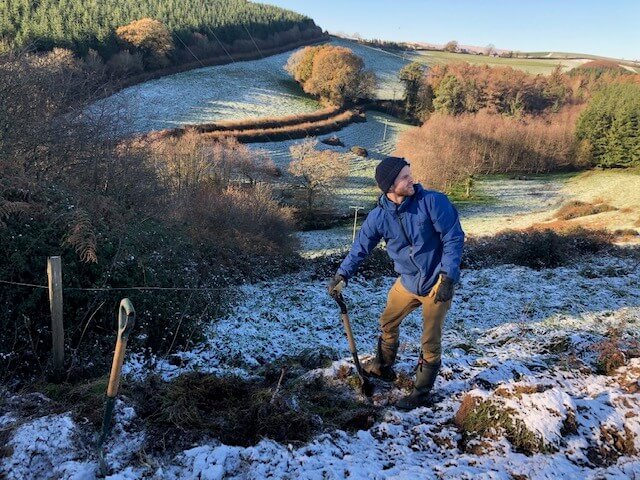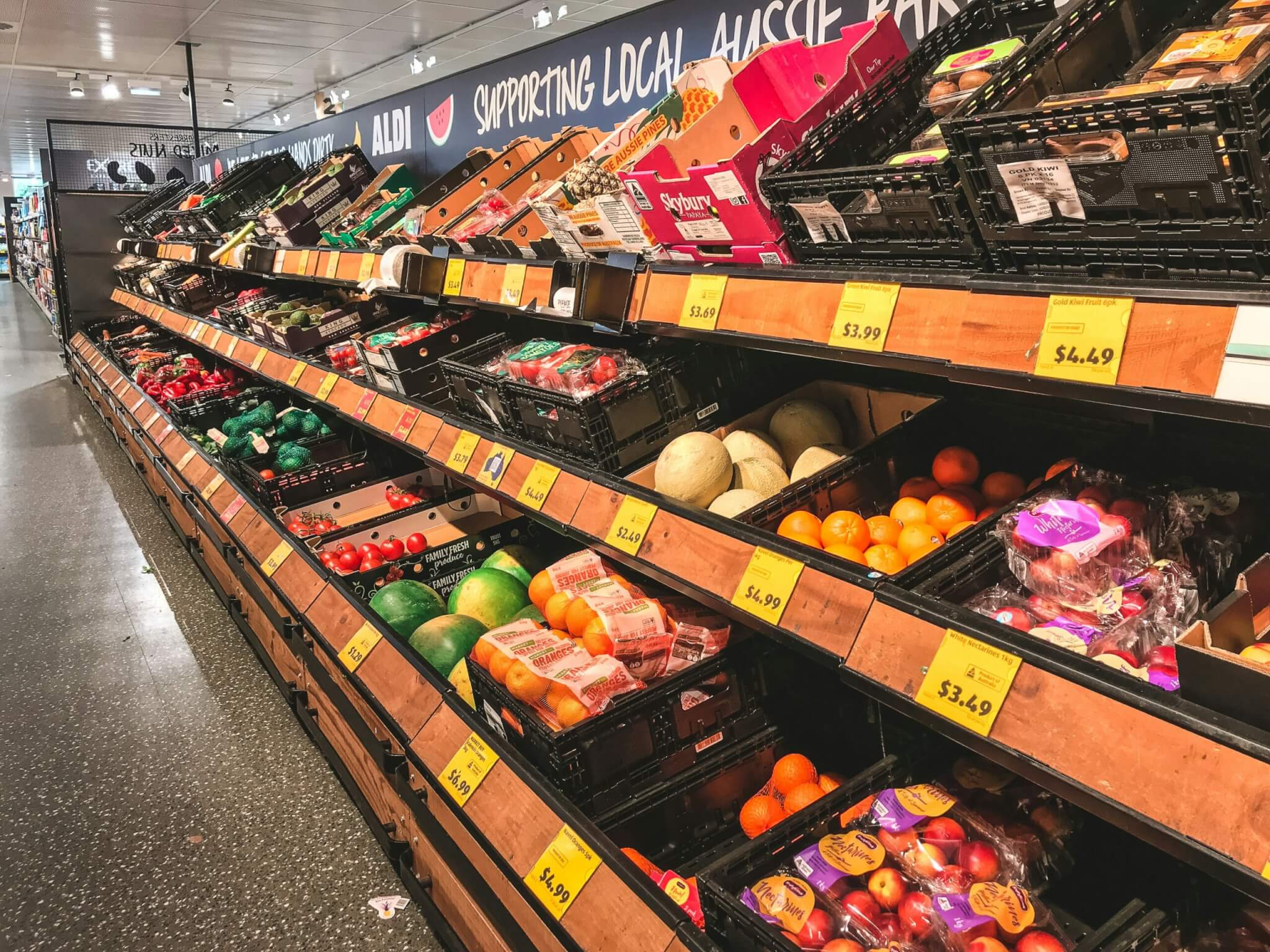Back in 2021, Ed Scott (Riverford’s assistant harvest manager, and a real biodiversity hero), plus a band of co-owner enthusiasts, planted 1.5 acres of new woodland on our Devon farm. Those trees are now shooting up and providing brilliant habitats for a wide variety of wildlife, such as weasels, voles, hares, birds of prey, grass snakes, and slow worms.
This winter, the focus has been on planting hedges. So far, we have planted almost 600m of hedges, some of which will act as a wind break to the walnut trees in our agroforestry plot (the field is pretty exposed, having a clear view to Dartmoor). Other hedges are providing a link for wildlife to move between existing ancient woodlands, species-rich meadows, and other old hedges bordering our veg fields. A further 400m will be planted next winter.
The hedges have been planted by volunteer co-owners from the office, packhouse and farm teams here at our Devon HQ, powered by hot chocolate, biscuits, and a sense of satisfaction that we can make a difference, even in a small way, to the biodiversity and climate crises facing our planet. On the first day, we were even rewarded with a flyby from a flock of lapwings – a beautiful but unusual sight in South Devon, and a reminder that if you spend a day outdoors in the countryside, you’re almost always going to witness something that boosts your mood!
Over the coming years, the hedges should thicken out, and grow into beneficial habitats where bats can hunt, birds can nest in summer and forage for berries in winter, and insects will start to congregate around the flowering blackthorn, hawthorn, dog rose, and other native trees and shrubs. We do, however, need to be mindful of our changing climate. Last year’s hot, dry summer killed off some new trees, and we’re now keenly aware of the importance of mulching the soil to protect their roots – ideally with wood chip. Without this added protection from the elements, our efforts may all be in vain in the thin soil of these Devon hills.
Hedge planting is part of our wider Biodiversity Action Plan. We’re also going to increase the size of existing hedges, dig ponds, improve water courses, increase food for over-wintering birds, and monitor wildlife – to better understand what we already have, and how we can provide habitats for more. Watch this space.












Somewhat ironical that your first day wildlife wow was a flock of lapwing, this species needing wide open spaces so that they can see predators around them, when you were planting hedgerows that will make the fields smaller. Good to be doing this of course but a timely reminder that planting trees and shrubs isn’t a panacea for wildlife and that good infield management such as organic farming is also very important.
Thanks for your comment Freda- we were planting on a steep Devon hillside which is unlikely to be suitable for lapwing. Lapwing are rare visitors to South Devon and only seem to venture down to us in the winter during cold snaps. But totally agree that hedges and trees aren’t a panacea!